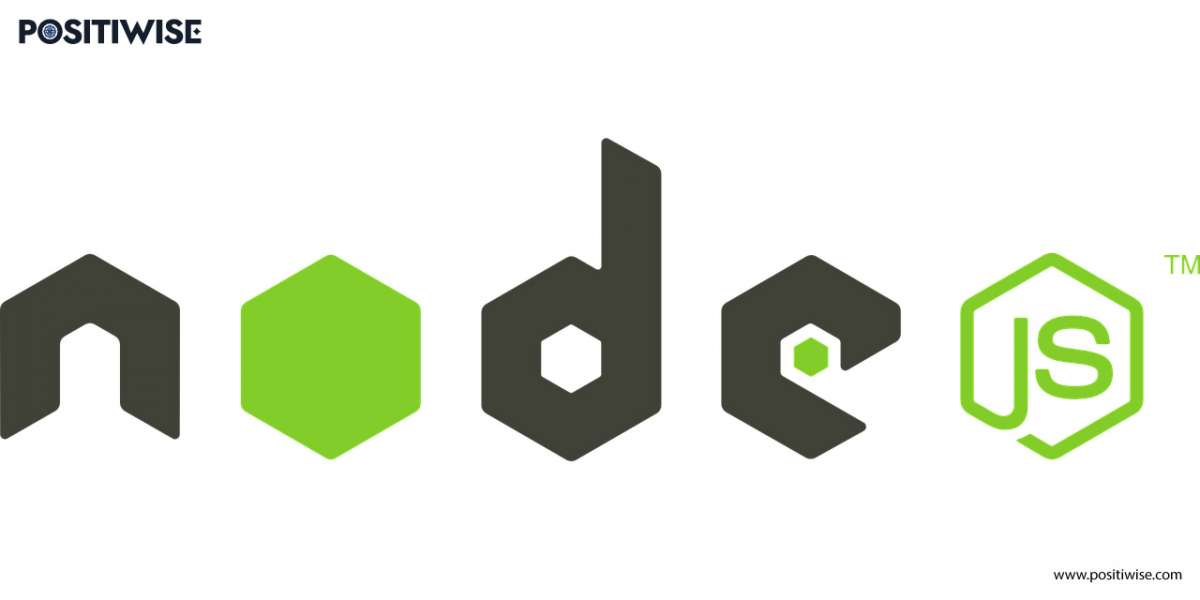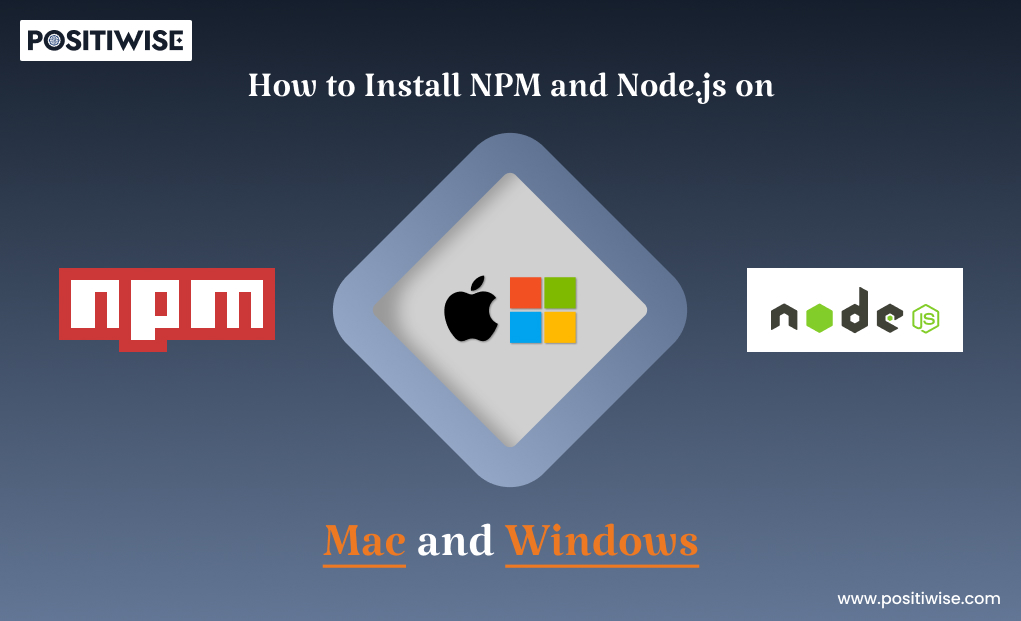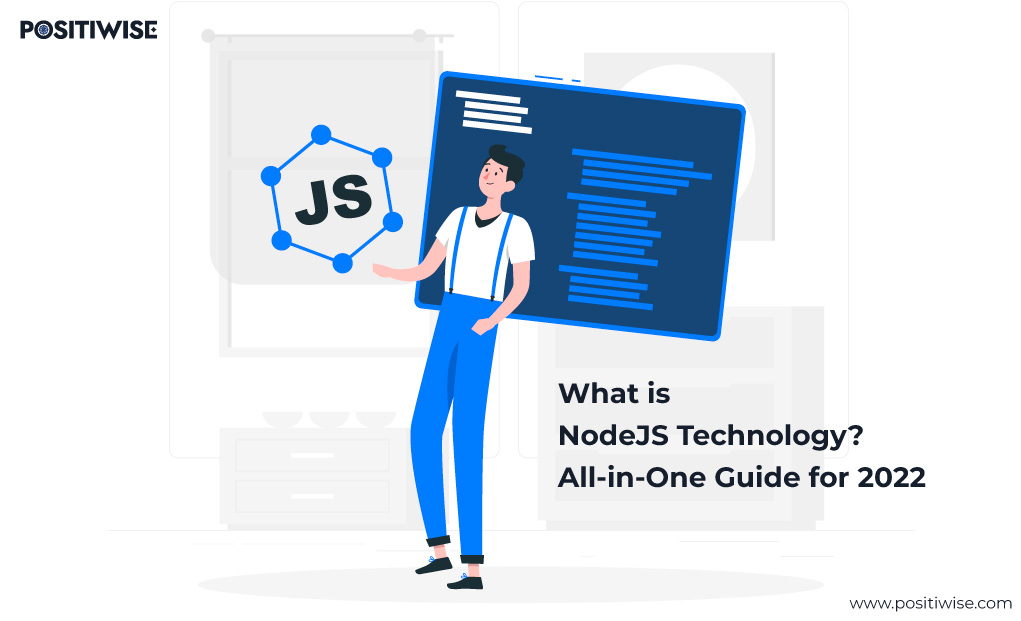Let’s Understand How big is Node JS for Web Development
Quick Overview:
The road to becoming a leading organization is full of obstacles, and in today’s world, every business is working on its digital brand establishment to retain potential customers. Web-based applications are preferable, as they allow access to the internet across multiple devices regardless of their operating system.
While planning for software development, selecting an accurate platform is one of the crucial tasks, as it functions as a pillar for future business possibilities. Therefore, the right choice made at the beginning lets you decide the faith of your enterprise.
If you consult with an IT company, such as Positiwise, they will likely introduce you to the superior NodeJS language for creating a responsive and robust business intelligent application.
So, let’s move ahead and understand why NodeJS is appraised, how it works, what procedures are taken for NodeJS solution development, and which applications can be fabricated using it.
What is Node JS, and How it Works?
In 2009, developers created NodeJS as a platform based on Google Chrome’s JavaScript V8 Engine, enabling the effortless creation of scalable network-enabled solutions. Aided by a large developer community, it is an open-source environment that guarantees consistent architecture and security updates. NodeJS-based applications are primarily written in the JavaScript programming language, and these solutions can be executed on Windows, MacOS, and Linux machines.
NodeJS offers the advantage of using JavaScript libraries and modules for crafting a high-performing solution and also supports a runtime environment to build real-time applications for excess business growth.
Benefits of Node JS: What makes NodeJS remarkably Considerable
Every organization requires a fast, smooth, scalable, and robust application, and many questions arise about whether NodeJS can fulfill these demands.
Node JS has the answer to all your questions through its electrifying features, which makes it a major component of the developer’s toolkit.
- Single-Threaded but Faster
- High-Performance and Asynchronous
- NPM and No Buffering
- Event Driven and Enhanced Functioning
Single-Threaded but Faster
NodeJS follows the Single Threaded Event Loop Model, which aids it in executing multiple requested operations using an individual thread. The main thread is divided into multiple background threads, which the client cannot discover.
In addition to this, a non-blocking structural design assists in flawlessly completing input and output processes simultaneously without any delay and by maintaining Quality of Service.
High-Performance and Asynchronous
By default, the system utilizes an asynchronous process execution mechanism to manage all the requests sent from the client system. The system checks whether it needs database access whenever it receives a new request. Depending on the requirement, it establishes interaction, or the server simply sends the appropriate acknowledgment.
This technique saves time and leads to successfully completing all the requests using a single thread. Moreover, verifying requests at the beginning improves the application performance and assures seamless communication.
NPM and No Buffering
NPM is the major package manager responsible for installing and configuring all the essential NodeJS packages, modules, and in-built templates. In addition, it is the largest repository available online, including 80,000 packages, and still adding more daily.
Further, with its incorporated callback function, NodeJS caters to the user with output in the form of small data blocks. This eliminates the need for the user to wait until the entire process is completed, thereby eliminating buffering time for streaming applications.
Event Driven and Enhanced Functioning
With its inherent event loop, Node activates its server as soon as it boots up and initiates all defined variables automatically. A new event is generated whenever a user request is detected, and its execution begins.
This makes the Node programming faster, optimizes performance along with making the application lightweight, and establishes a strong data transfer channel between server and client.
Let’s have a look at How Node JS Works.
NodeJS executes its functions on the principle of the event-driven mechanism implemented in it. This aid enables the processing of numerous operations using its single-thread architecture. Each new client request is allocated a dedicated thread, and the system processes all events concurrently.
Moreover, if input and output operations become blocked, the server promptly activates the callback function. This assists the server in avoiding resource wastage and ensures efficient utilization of processing power. It also eases the primary thread by breaking down complex procedures into distinct action plans, thereby aiding the system in achieving results swiftly.
Event Loop and Callback function are the major components that work in inter-relation for carrying out requisition from clients.
Why is NodeJS Faster? A Closer Look at the Internal Functioning of Node JS
NodeJS classifies the instruction into two groups: CPU-oriented and disk-oriented. Every time the client system sends a command, it checks whether it only needs a processor core or if it must establish a connection with the integrated database. The main thread identifies the purpose of the request and assigns a sub-thread as per requirement.
The I/O thread handles any read and write operation, connecting it to the database and initiating callback events placed within a queue to process other events. The loop’s status remains true until all data is modified at the destination. Once this is complete, the process exits the queue, and another event implementation begins.
In the case of only CPU-oriented requests, the server itself allocates it a dedicated thread. In this type of execution, there is no need for interaction with the database, making this process fast. Moreover, multiple threads work simultaneously, enabling NodeJS-based applications to function faster and steadily, benefitting stakeholders with ameliorated efficiency.
I/O and CPU threads often work together because of services provided to the customers through an enterprise-grade solution. For such cases, a single thread is allotted to take care of both activities. After a fixed interval, the progress of both actions is cross-checked so that the authorized person can be served with the desired outcome.
Web Development in Node JS
With the requirement of more and more network-enabled and scalable business applications, NodeJS development is becoming more popular. With its upgraded architecture, community support, and Node Package Manager, developers are able to save time in crafting feature-rich real-time applications.
Below, you can find out some of the major uses of NodeJS Development:
- Data Streaming Applications
- IoT Applications
- Backend and Frontend Development
- Chat Rooms
- Handling Queusd Input
Data Streaming Applications
Industry giants like Netflix and Amazon Prime benefit from NodeJS, as it ensures feather-light downloading and uploading speed for large amounts of data. This allows for the seamless display of ads, broadcasting live TV shows on mobile devices, and conducting official conferences without any interruptions. It’s not just videos; any type of file is also processed smoothly while maintaining an appropriate standard.
IoT Applications
NodeJS is a perfect choice for furnishing an IoT application, as it can seamlessly process data transferred between multiple smart devices. Its event-driven architecture ensures the maintenance of Quality of Service (QoS), and it processes concurrently the data received from devices. This also empowers users to monitor the performance of each network component.
Backend and Frontend Development
NodeJS is not like any other programming language, which can only build interfaces or logic. Businesses employ this versatile technology to develop comprehensive full-stack solutions for their operations. As a result, NodeJS software ensures cross-platform compatibility, enables seamless API integrations, and enhances user interactivity.
Chat Rooms
In the present day, people prefer communicating via chat, and numerous games and mail applications come equipped with integrated chat features. Using packages from NPM, you can establish separate chat rooms exclusively accessible to your staff or any designated group of members. Moreover, it’s possible to attach videos, images, PDFs, and other files as needed.
Handling Queued Input
Developers design the operation of applications to handle large data blocks. NodeJS ensures the preservation of each transmitted data block within an application. Its concurrent connection handling diminishes bottlenecks in the database, maintaining software responsiveness even under high loads.
Want to boost your Node JS project with ease?
Creating a Node.js project is effortless with our team at Positiwise, as we have skilled Node.js developers ready to assist you.
NodeJS Development – Wrapping Up
Upon considering all the information we discussed, NodeJS is a well-furnished platform for fabricating authentic business solutions with characteristics to manage several processes at a single time. Furthermore, a substantial community of development professionals and researchers supports it. It makes NodeJS a highly extensible choice for building solutions capable of handling substantial amounts of data. Additionally, its evolving architecture enhances the interlinkage between all components, establishing a secure ecosystem that ensures data confidentiality, integrity, and availability.
Expert in Marketing Strategy and Brand Recognition
Jemin Desai is Chief Marketing Officer at Positiwise Software Pvt Ltd, he is responsible for creating and accelerating the company’s marketing strategy and brand recognition across the globe. He has more than 20 years of experience in senior marketing roles at the Inc. 5000 Fastest-Growing Private Companies.






